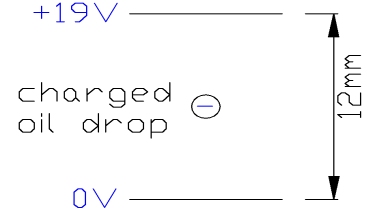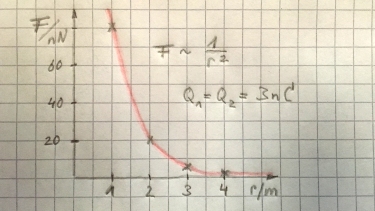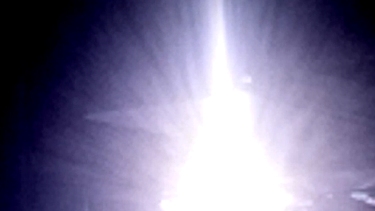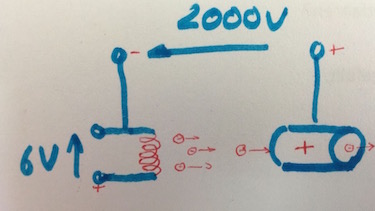
Electric Fields
Question 1 force on charge
Which drawing is correct?
Question 2 Coulombs law
| $Q_1$ /nC | $Q_2$ /nC | $r$ /m | $F$ /nN |
| 3 | 3 | 1 | |
| 3 | 3 | 2 | |
| 3 | 3 | 3 | |
| 3 | 6 | 3 |
What is the size of the force when
- the charges are identical?
- the charges are different?
- one charge is doubled but the distance stays the same?
| $Q_1$ /nC | $Q_2$ /nC | $r$ /m | $F$ /nN |
| 3 | 3 | 1 | 80,9 |
| 3 | 3 | 2 | 20,2 |
| 3 | 3 | 3 | 8,99 |
| 3 | 6 | 3 | 17,98 |
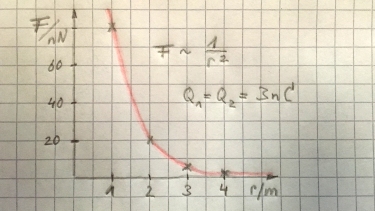
Experiment 1 shape of an electric field
idea by B. Höger, Tettnang
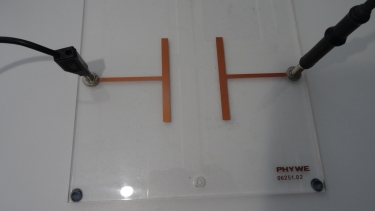
All you need is castor oil and semolina grain as shown and a p.d. of 20 kV.
We cover the bottom of a glass with castor oil and spread a thin layer of some semolina grain. Now we put the glass on top of the capacitor and turn the high potential difference on.
hint: Just mix the semolina grain with some ink.
How is the shape for a uniform electric field?
How is the shape for a non uniform field?
Which properties does the shape of the electric field have?
Shape of uniform field
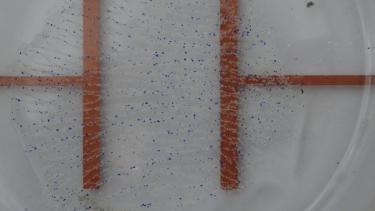
Shape of non uniform field

- properties of the shape of the electric field:
The electric field lines enter vertically, they have a direction and the greater the electric field strength the more dense they are.
Question 3 ionisation
A spark can pass through air when the electric field strength is 3,000,000 V/m.
- The gap between a human and the car is 2 mmm. What p.d. is needed to produce this spark.
- An overhead electricity cable reaches a maximum voltage of 400,000 V. How close could you get to the cable before receiving an electric shock?
- A fuse interrupts a power circuit with 230 V. How long is the distance, when the spark will be erased?
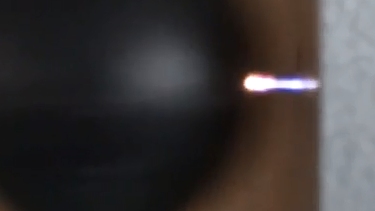
- potential difference p.d.: $V=E\cdot d=3,000,000~V/m \cdot 2\cdot 10^{-3}~m=6000~V$
- distance: $d=\frac{V}{E}=\frac{400,000~V}{3,000,000~V/m}= 0.13~m =13~cm$
- distance: $d=\frac{V}{E}=\frac{230~V}{3,000,000~V/m}= 76.7 \cdot 10^{-6}~m$
Question 4 Charged oil drop
A negativley charged oil drop with a mass of $2.6\cdot 10^{-17}~$kg is held stationary in an electric field with a p.d. of 19 V in Millikan's experiment.
- What are the two forces acting on the drop and in which direction do they act?
- If the two forces balance the oil drop is held stationary. Calculate the charge on the oil drop.
- Gravity (down) and Electrostatic force (up)
- $$mg=QE=Q\frac{V}{d}$$ $$Q=1,6\cdot 10^{-19}~C$$
